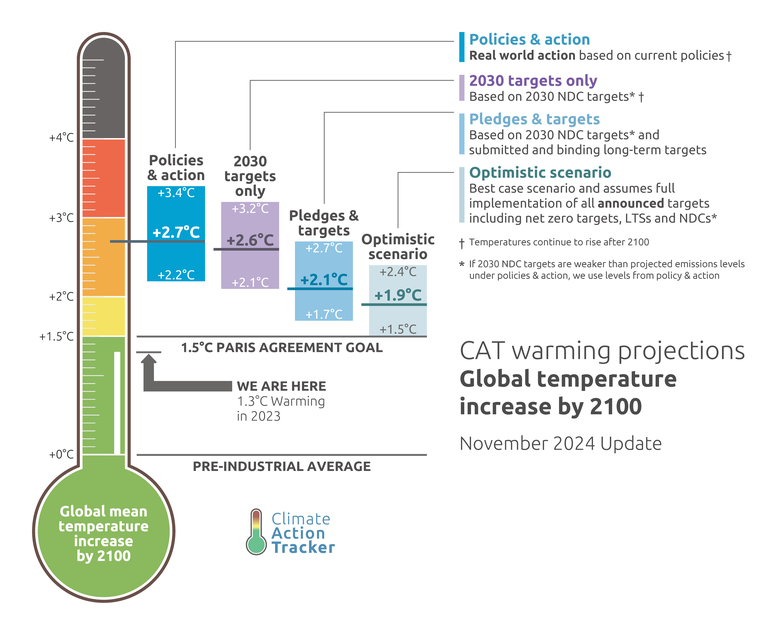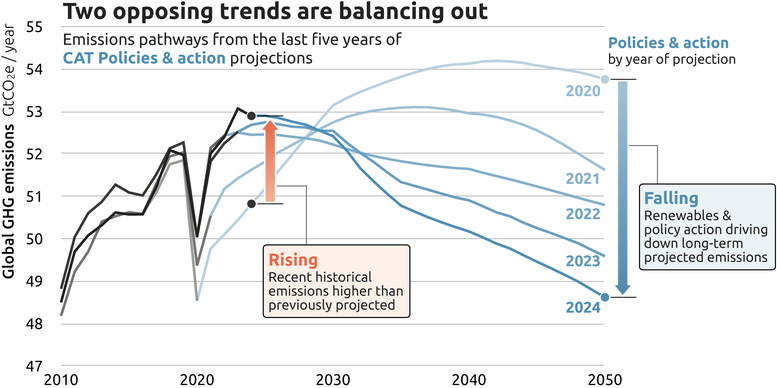Despite an escalating climate crisis marked by unprecedented wildfires, storms, floods, and droughts, our annual global temperature update shows global warming projections for 2100 are flatlining, with no improvement since 2021. The aggregate effect of current policies set the world on a path toward 2.7°C of warming.
This three-year standstill underscores a critical disconnect between the reality of climate change and the urgency that governments are giving to the policies needed to reduce the greenhouse gas emissions, driving global warming at a rate of close to 0.3°C per decade.

The threats ahead
We note that the current policy warming of 2.7°C is a median estimate with a 50% chance of being higher or lower, and our knowledge of the climate system tells us that there is a 33% chance of it being 3.0°C or higher and a 10% chance of being 3.6°C or higher.
The election of Donald Trump as President would impact the projected temperature levels that we present here, but it is uncertain to what extent. It could add 0.04 °C of warming by 2100 to our current policy estimate of 2.7°C (assuming the rollback of policies is limited to the United States) to a few tenths of a degree to our optimistic scenario of 1.9°C (assuming the US net zero target is permanently removed). This would be very damaging to the prospects of limiting warming to 1.5°C.

Fossil fuel growth cancels out renewable energy progress
While renewable energy and electric vehicle deployment reported record-breaking progress: energy investments in clean energy are now double those for fossil fuels, particularly oil and gas, for the first time, while investment in clean manufacturing capacity is growing rapidly.
However, fossil fuel subsidies remain at an all-time high and funding for fossil fuel-prolonging projects quadrupled between 2021 and 2022. Unsurprisingly, this means that our emission projections expect an emissions peak by the end of the decade, but lack the steep decline necessary in that period to reach the Paris Agreement goal.

What should governments do?
In this update, we also focus on seven large emitters (China, the United States, India, the European Union, Indonesia, Japan and Australia) and the COP “Troika” countries (the UAE, Azerbaijan and Brazil) that, together, were responsible for 63% of global greenhouse gas emissions in 2022.
These countries need to show international leadership in order to drive climate action, including setting ambitious 2030 and 2035 emissions reduction targets, and strengthening their domestic mitigation measures to meet those targets.
As governments are expected to submit new NDCs, we assess what they can do to align their 2030 and new 2035 NDC targets with 1.5°C. We present 2030 and 2035 targets that align with the CAT’s modelled domestic pathways towards 1.5°C. These pathways reflect ambitious mitigation from current emissions levels.







